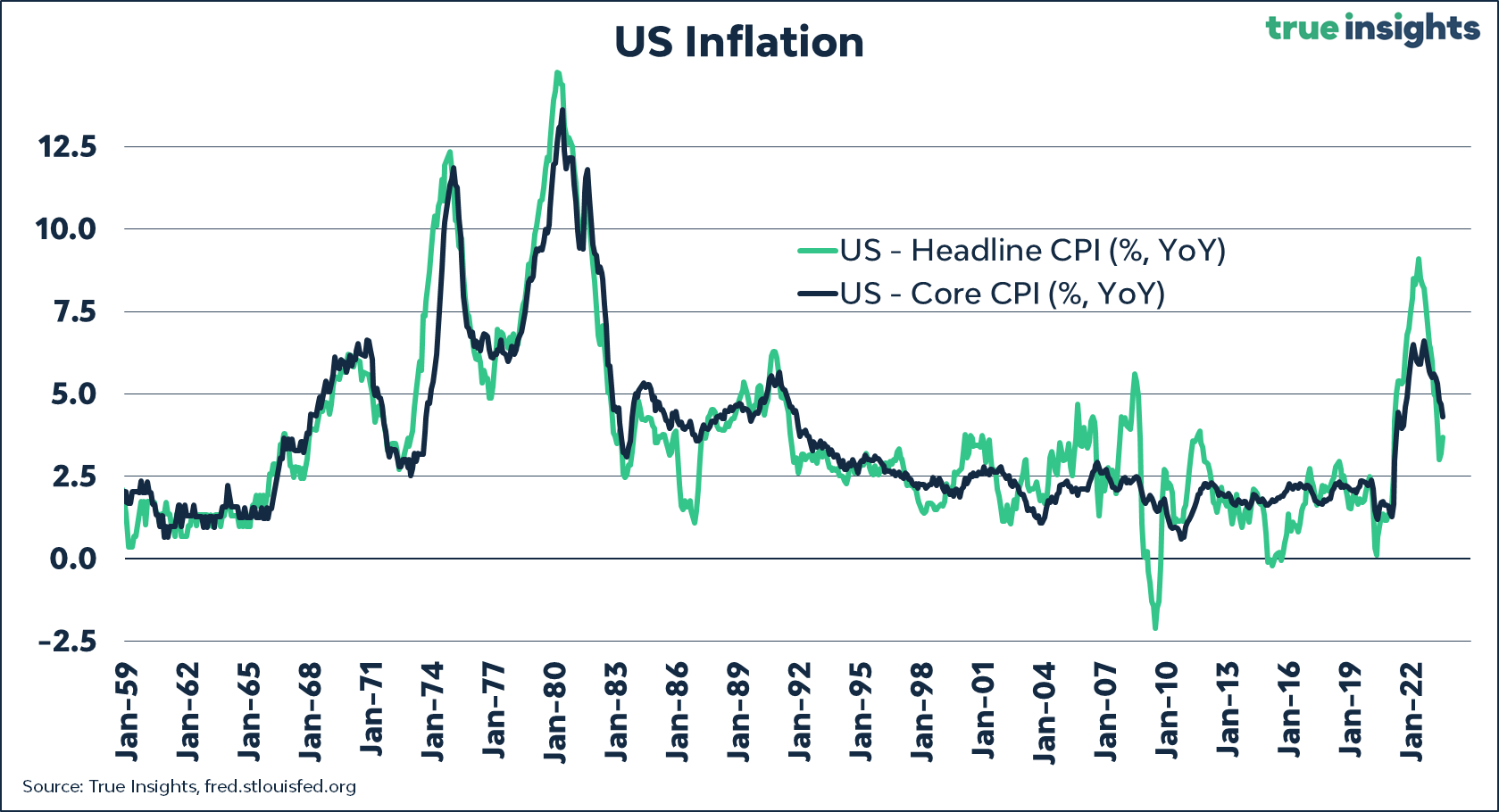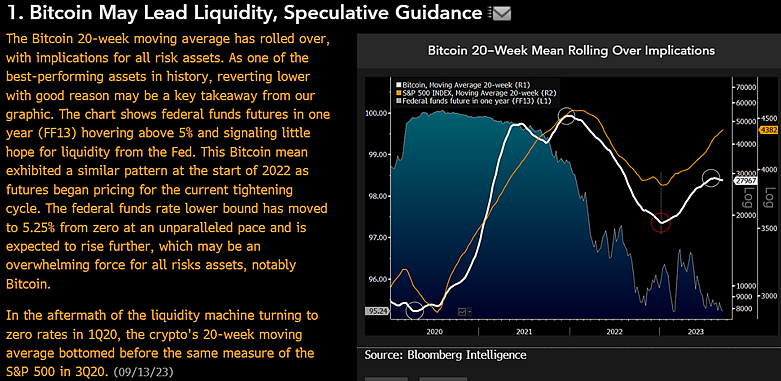- One contributing factor is that US headline inflation for August came in above expectations; It increased to 3.7% from 3.2% of the previous month.
- McGlone emphasizes that Bitcoin is an “extraordinarily liquid” asset that appreciates significantly without being tied to specific projects or obligations.
- McGlone’s analysis shows federal funds futures for next year trending above 5%, signaling that liquidity expectations from the Federal Reserve (Fed) are limited.
Drawing attention to two different worrying factors for Bitcoin, analysts emphasize that these are a danger for risky assets; Will the market remain in a downward trend?
There Are Some Concerning Signals for Bitcoin

Despite Bitcoin’s recent return to the crucial $26,100 level, signaling a potential point of resistance for future gains and preventing further declines, there are concerning signals that could worry short-term Bitcoin bulls. The combination of these factors suggests the possibility of a market correction.
One contributing factor is the August headline inflation in the US coming in above expectations, rising from 3.2% the previous month to 3.7%. While not a game-changer, it implies a slight increase in the probability of another interest rate hike, currently at 53%. Multi-asset investor Jeroen Blokland has drawn attention to this development.
Additionally, Bloomberg’s senior macro strategist Mike McGlone suggests that Bitcoin may be leading the downward trend. McGlone emphasizes that Bitcoin is an “extremely liquid” asset that has significantly appreciated in value without being tied to specific projects or obligations.
However, its historical emergence during periods of low-interest rates makes its position noteworthy as a potential precursor to a market reversal.
US Inflation Data and Rising Interest Rates Pose Challenges for the Bitcoin Bull Run
A significant indicator highlighted by McGlone is the reversal of Bitcoin’s 20-week moving average (MA), which has implications for all risk assets.
Historically, the reversal of Bitcoin, one of the best-performing assets, is considered a significant observation. McGlone’s analysis shows that federal funds futures for the next year are trading at over 5%, signaling limited liquidity expectations from the Federal Reserve (Fed).
A similar pattern was observed when Bitcoin began pricing in the current tightening cycle at the start of 2022. With the federal funds rate expected to rapidly rise from zero to around 5.2% and continue to increase, significant pressure could build on all risk assets, including Bitcoin.
McGlone also points to the historical relationship between Bitcoin and the broader market. Following the liquidity injection resulting from the transition to zero interest rates in early 2020, Bitcoin’s 20-week moving average reached its low point before the S&P 500 experienced a similar trend in the third quarter of that year.
Mike McGlone’s analysis raises concerns about Bitcoin’s future performance due to changing dynamics in interest rates and the potential impact on all risk assets. As Bitcoin’s 20-week moving average shows signs of reversing, investors and market participants will closely monitor price movements and assess its ability to withstand the pressure of rising interest rates.








